Restoration as rebirth: River re-meandering begins
Trees were cut along Jacoby Creek last week as a 10-year, $2-million, 60-acre restoration project gets underway.
By Megan Q. Bachman
Last week, the trees started to come down along Jacoby Creek. The re-meandering of the creek, in partnership with The Nature Conservancy and the Tecumseh Land Trust, has been in the works for nearly five years, but it was still upsetting to see them fall.
Large Osage orange trees, limbs twisted into their gnarly shapes, long stabilized the banks of the creek. Now they laid down along its edges, ready for the next phase of their life as the shapers of the new creekbed.
For those who have worked and taught at Agraria, it was an emotional day. It’s hard to see death where there was once life. And it is not an unfamiliar feeling to many of us who have witnessed so many beloved forests and fields paved for strip malls and tract housing in our lifetime. Over and over, we have watched “progress” disgrace life.
But this is not that. This is being done to right a wrong: to re-wild a river that was tamed, and restore the opportunity for it to thrive. For it is not death, but rebirth that we are ushering in.
Decades ago, the creek and its tributaries were carved out and straightened, so that more land could be used for intensive farming. Wetlands teeming with life were drained. The river became a ditch, laden with chemicals and unable to clean itself. Flow rates and erosion increased, habitats were lost, sediments accumulated, and nutrient cycling was radically altered. Pollution was shunted downstream, ultimately to the Little Miami River.
An aerial photo of Jacoby Creek and its streams in 1964 shows little vegetation along the channelized creeks surrounded by intensive cultivation. Since then, the riparian areas were permitted to reforest themselves, with a variety of volunteer species, from invasives to natives, honeysuckles to hackberries. Eventually a quarter of the riparian area — about 32 acres in all — was forested.
This aerial photo from 1964 shows extensive farming, very little tree cover and straightened streams. (via The Nature Conservancy).
During that time the Osage oranges came in, preventing soil erosion with their sturdy roots. "One of our very tough and durable native trees,” writes Michael Dirr of the trees in “Manual of Woody Landscape Plants,” they are able to withstand extremes of heat, dry, wind, wetness, and acidity. Native to the south, they were planted across the country for hedge rows, earning them their other common name, hedge apple.
Those ancient trees, whose massive fruits once fed wooly mammoths, and who were later named for the Osage, an Indigenous tribe that used its high-quality wood for bows, were largely what we found when we purchased Agraria five years ago. On Monday, we visited the creek and thanked them, and the other felled trees, for their service to the river, animals, birds, insects and fungi. Many will continue on, forming the foundation of the new creek meanders. Some smaller trees will even be cut, turned upside down, and driven back into the ground, their root wads stuffed with dirt to hold water and create new habitat.
Contractors moved felled trees into piles to create habitat as part of the restoration.
“These are literally going to be the foundation for all the new growth,” Agraria youth education manager Emily Foubert said of the trees during the ceremony.
Added Amy Chavez, Agraria’s regenerative community medicine coordinator, the re-meandering project emphasizes the difference between land ownership and land stewardship as it looks to improve the ecosystem on a longer timescale.
“What does that mean to be in stewardship of land, to be able to hold a vision for a generation who isn’t here yet, who isn’t born yet?” she reflected.
“Re-meandering and creating a new container that is actually of integrity so that the energy in the water can flow,” Chavez added.
Susan Jennings, executive director, was also thinking long-term, in spite of narratives that we don’t have time for such future-oriented projects.
“There is this feeling that the world is coming to an end so we don’t have time to do things, but we do,” she said. “Maybe there is enough time to have a 100-year restoration.”
The Nature Conservancy/Biohabitats design for the restoration of Jacoby Creek includes re-meandered streams (blue) and wetlands (bright green). The entire project area is around 60 acres (dark green).
Ultimately, an unhealthy ecosystem is being uprooted for a healthy one. The meanders will slow the water down, preventing erosion and creating new habitat. Once the riverbed is repaired, the reforestation will begin. In the end, The Nature Conservancy will plant 400–600 native, live and healthy woody plants per acre — at least half of them trees — in the riparian buffer zones and wetland areas, which encompasses the majority of the restoration area. To that, Agraria is adding hundreds more in an expanded buffer that will also serve as a food forest. In total, close to two acres of wetlands will be created.
It’s an ambitious, $2-million, 10-year project that is unique in its location on preserved agricultural land, and may be used as a model for other restoration projects around the country.
In the words of The Nature Conservancy, the goal of re-meandering is to:
Restore and enhance streams to provide aquatic habitat, improve water quality, regulate watershed hydrology, and attenuate runoff.
Produce high-quality wetland and wetland buffer habitat that will result in a gain in aquatic resource functions that are currently not present on the site.
Provide a diversity of restored habitat features and buffers.
Establish connectivity and habitat corridors within an existing natural area.
Aldo Leopold wrote that, “we abuse land because we see it as a commodity belonging to us.” But that, “when we see land as a community to which we belong, we may begin to use it with love and respect.”
We’ve decided that the most loving thing we can do for the land is to undo the harm that was done when the river channels were carved out in service to agriculture. We are moving the earth once again, only this time in service to the river and its future. We’ll still be able to farm, only in new ways. Together, we can take care of each other’s needs — human and nature — with respect and honor.
A few of the larger Osage oranges will be sticking around too — elder trees who will hold the whole story, the story of the rebirth of Jacoby Creek. We’re glad for that too.
*The writer is the assistant director of Agraria.
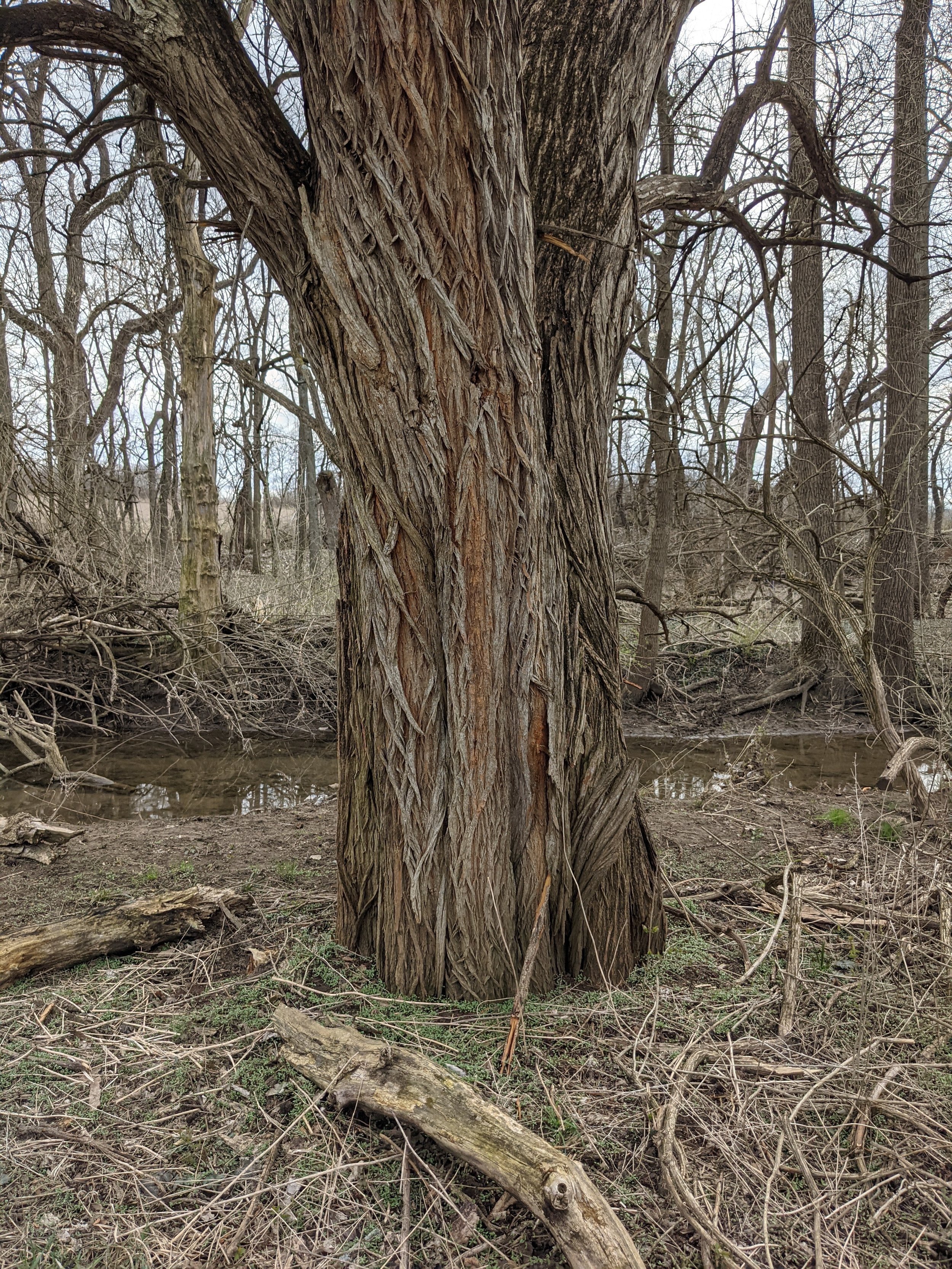
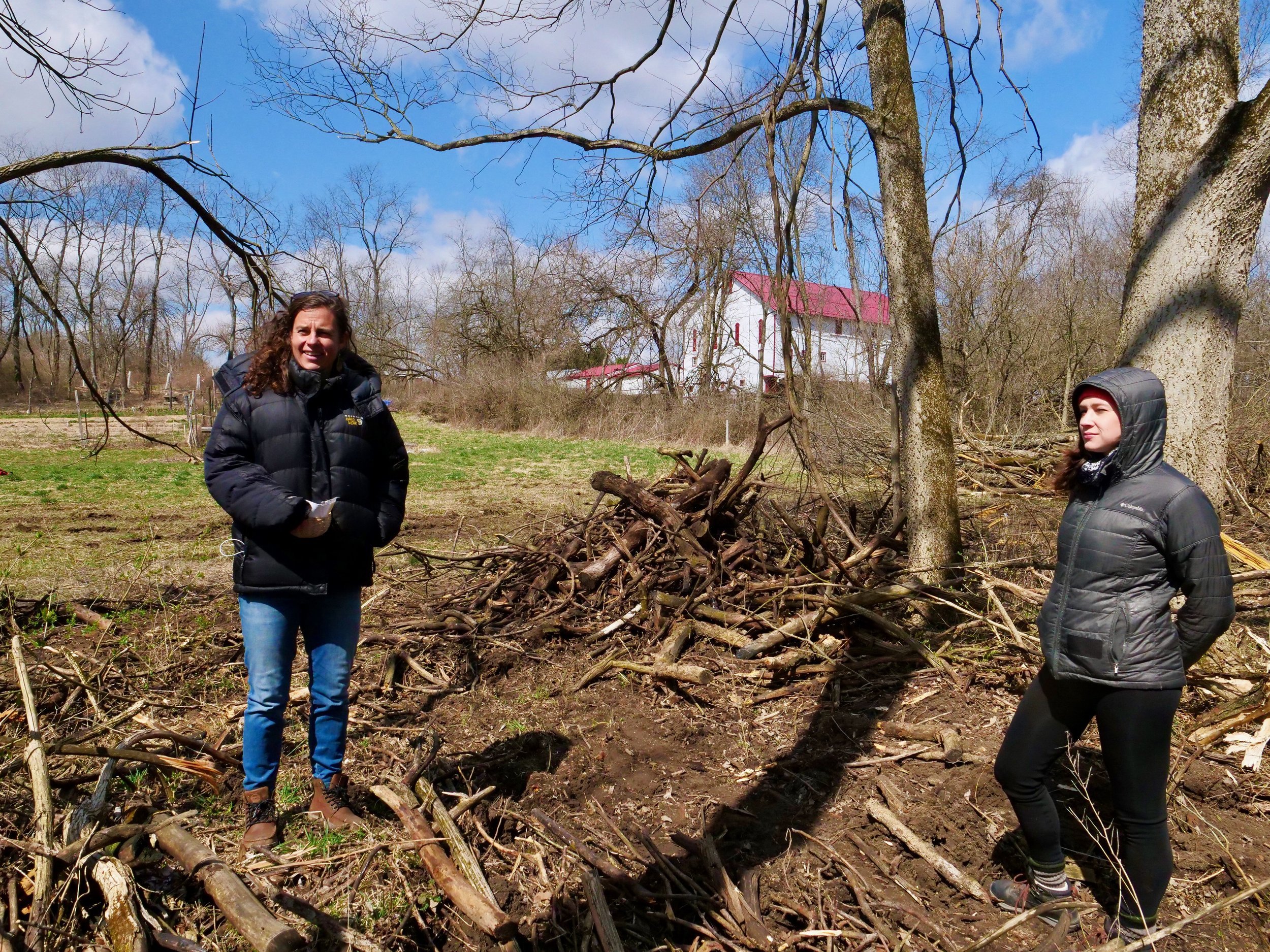
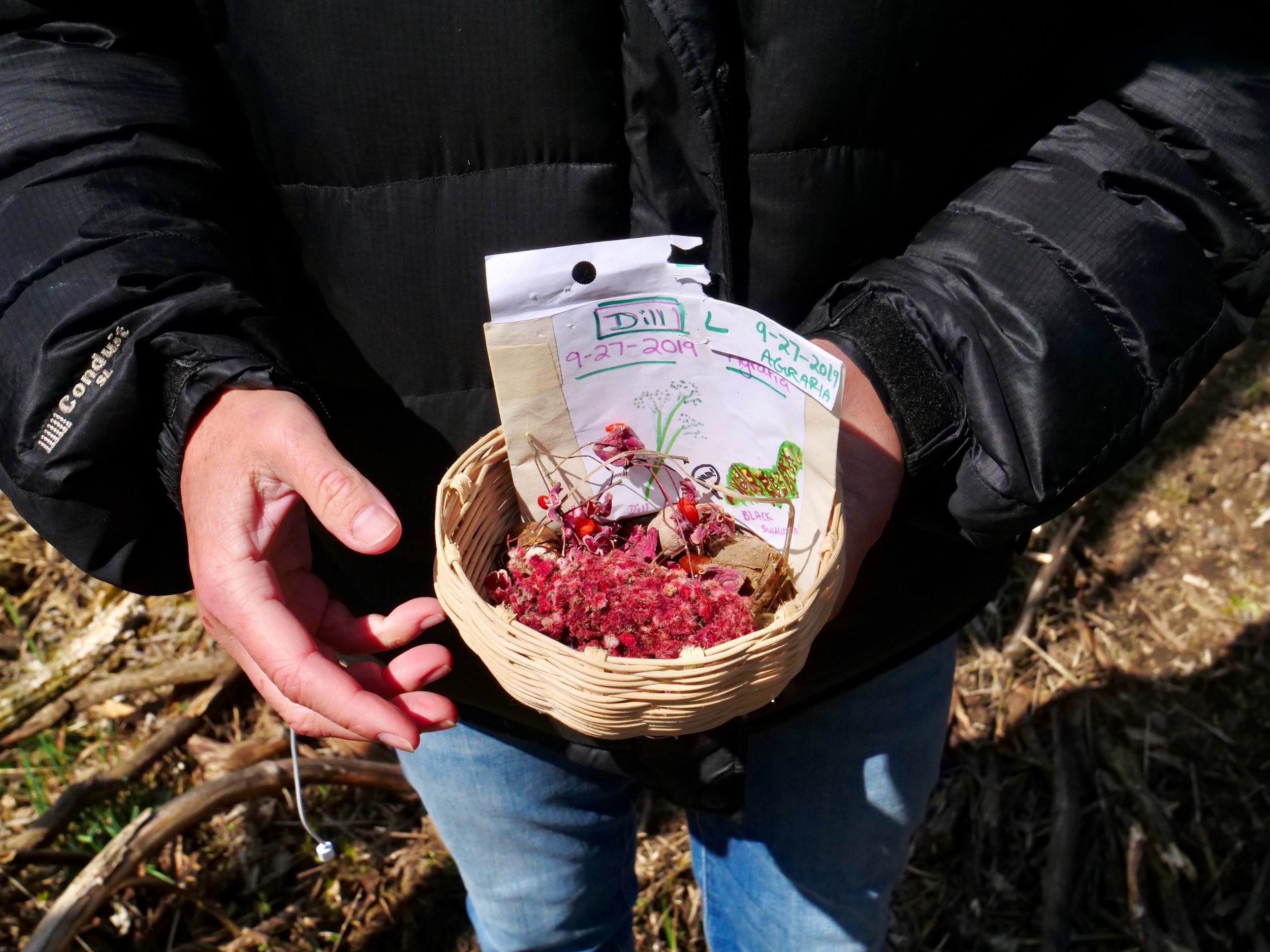
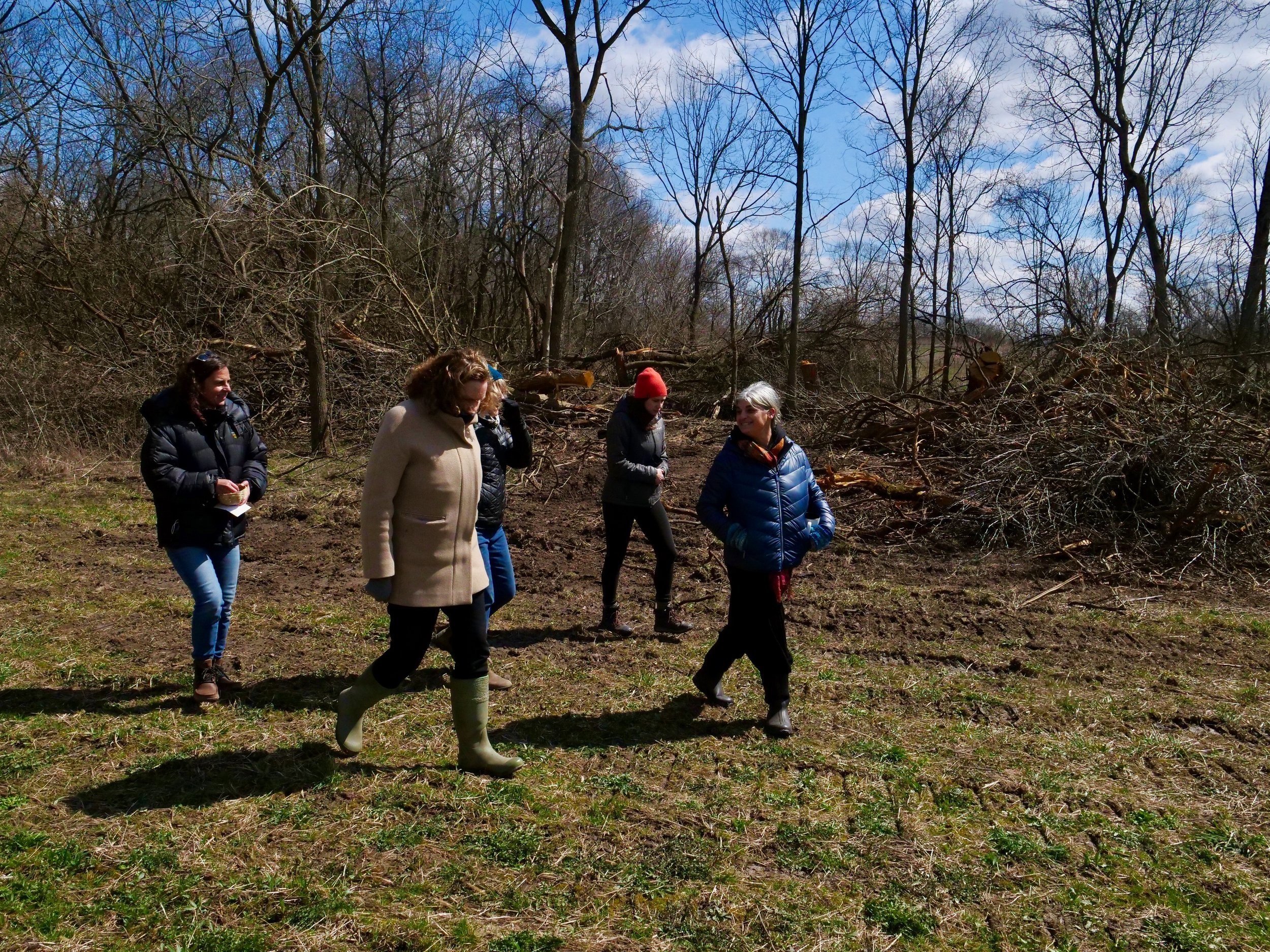
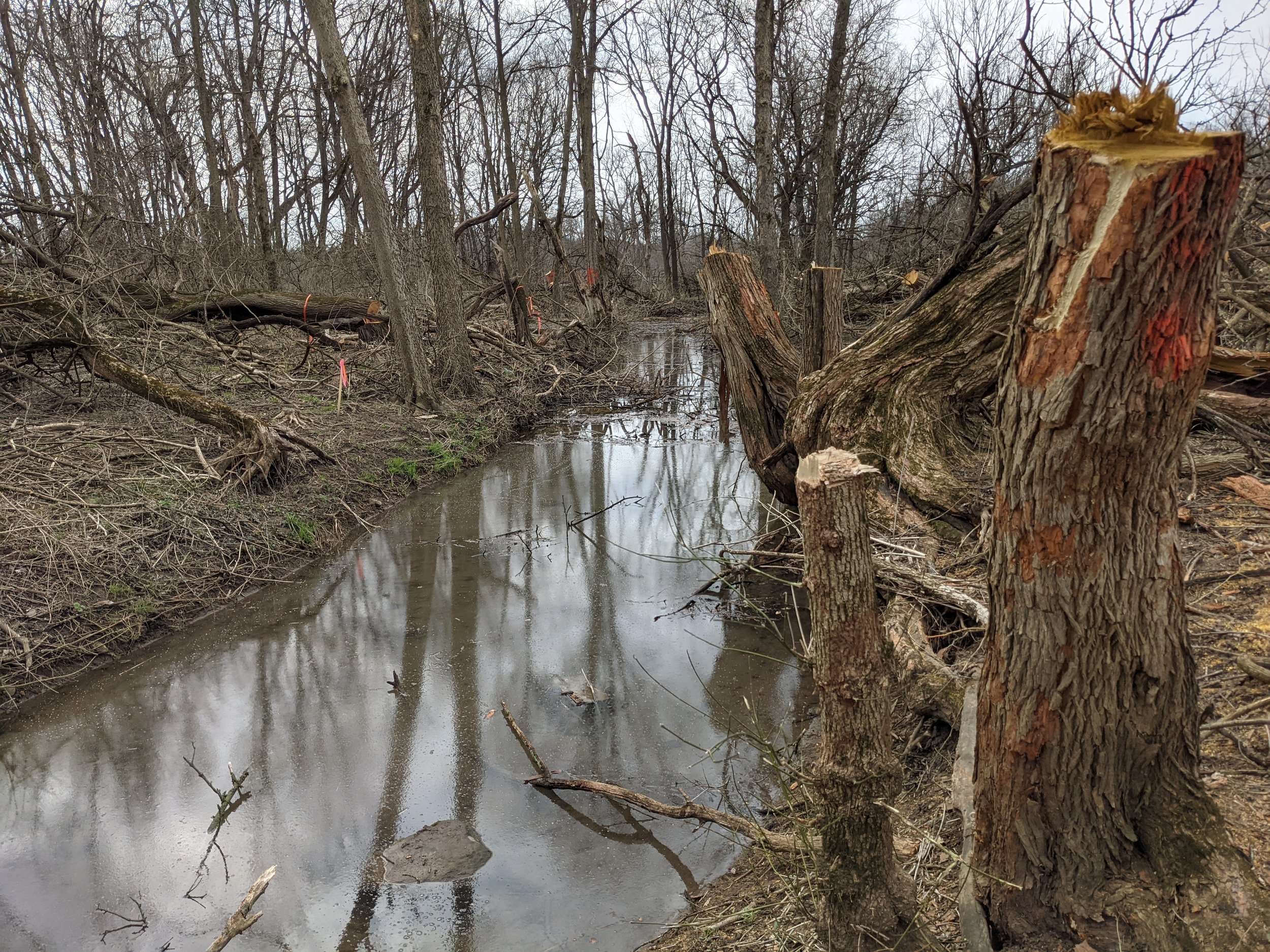
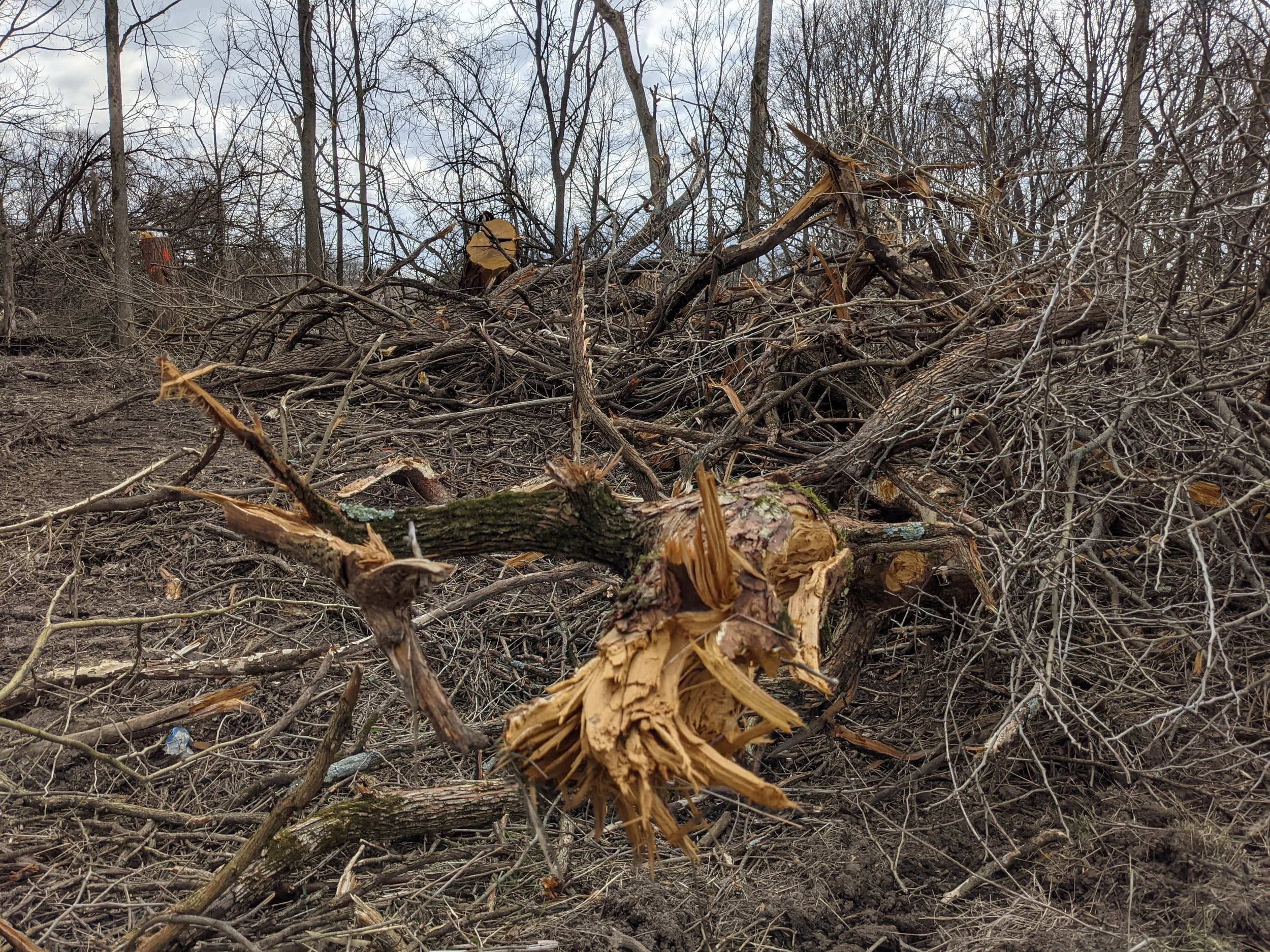
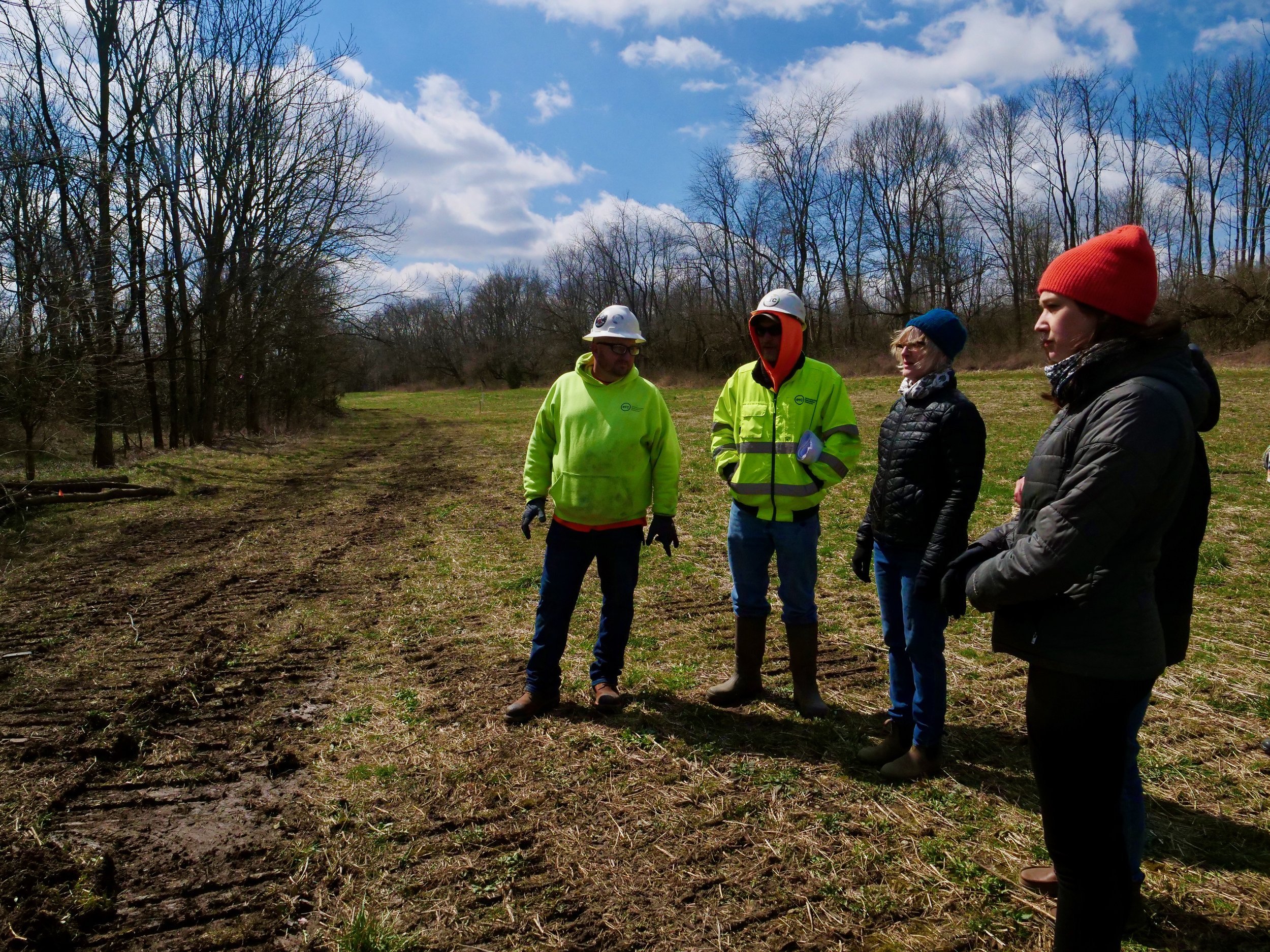
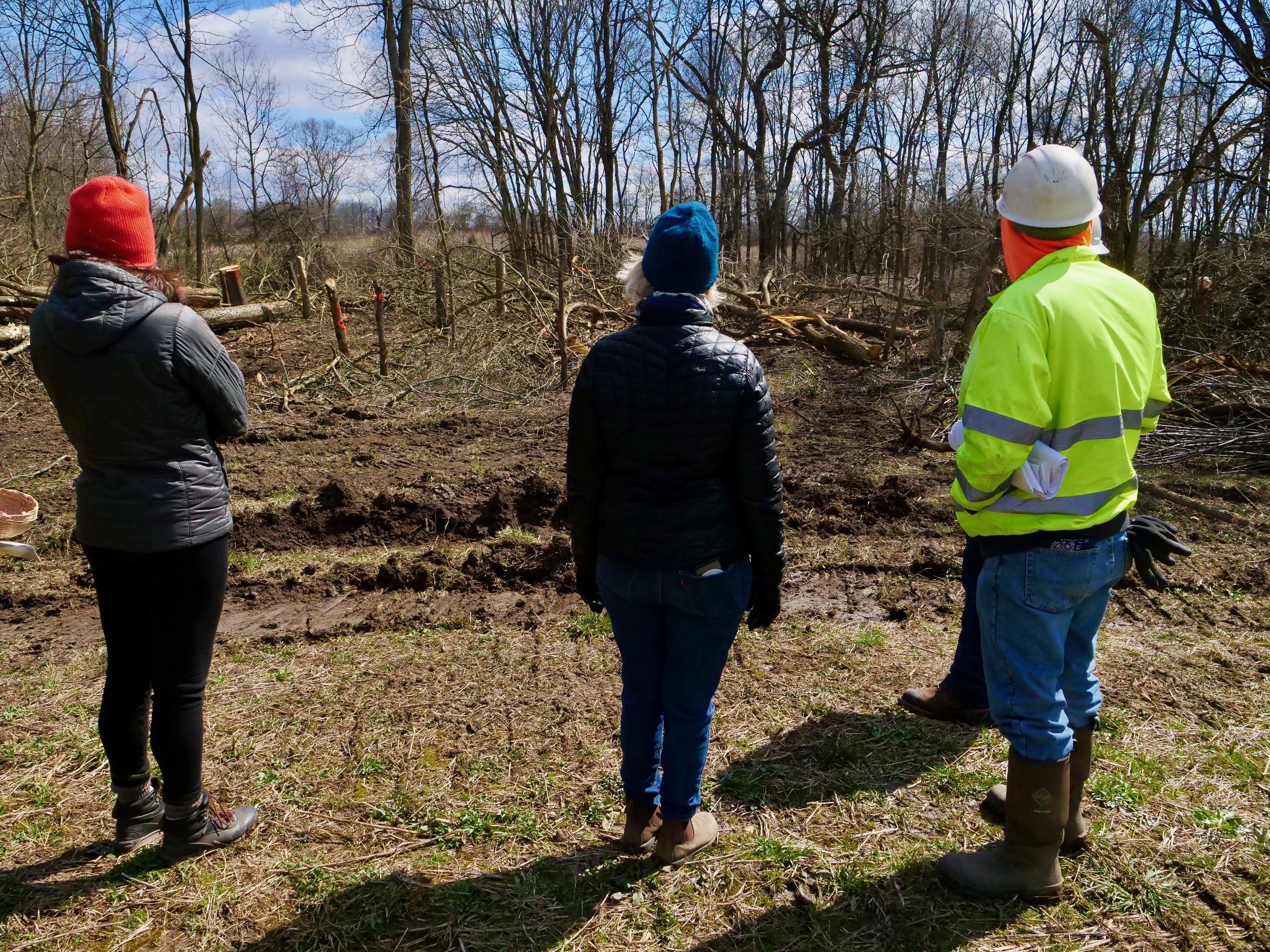
Above: A large Osage orange that was left standing. Agraria staff visited Jacoby Creek for a ceremony honoring the felled trees on Monday, March 28. Staff members also planted sumac, dill and other seeds in another part of the property to begin the reforestation process, and spoke with contractor ERC about the design of the project, which they said will greatly improve water retention and habitat.




